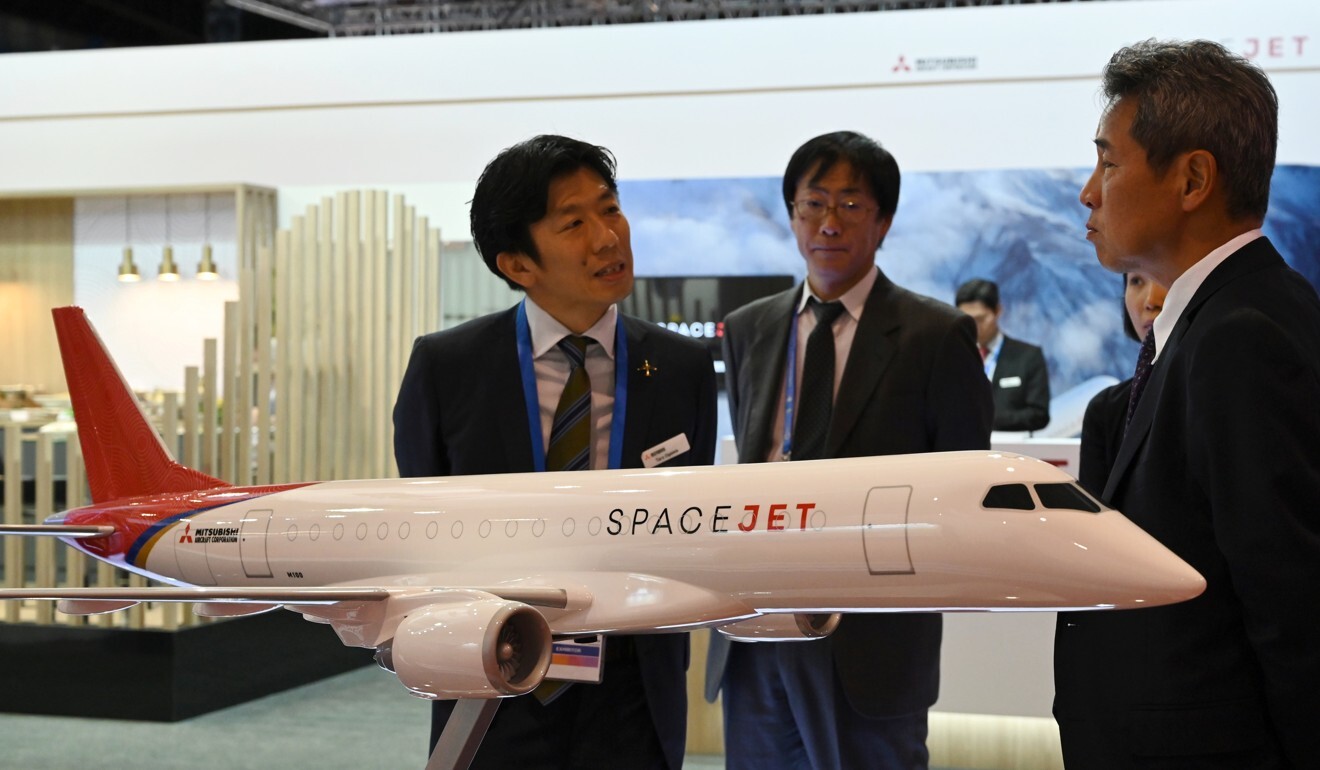
Mitsubishi’s SpaceJet fail leaves Japan’s aviation dreams in tatters (and coronavirus isn’t to blame)
- Mitsubishi Aircraft Corporation is to cut 95 per cent of the employees working on its troubled SpaceJet aircraft
- Move is final nail in the coffin for a project that was supposed to jump-start a Japanese domestic aerospace industry
Analysts, however, say the cuts are effectively the final nail in the coffin of an aircraft that had massive government support and was meant to serve as the basis of a new Japanese aerospace industry.
China faces ‘urgent task’ to develop jet engine as foreign hostility grows
Mitsubishi Heavy Industries, the parent firm, announced in October that it would suspend development of the SpaceJet and sharply reduce the budget. National broadcaster NHK reported this week that staff working on the programmes would be cut to the “bare minimum” of just 150 people from April, the start of the new financial year, and development work at the company’s facilities in the US state of Washington would be effectively halted. Test flights of the four prototype aircraft will be halted and future work limited to maintenance.
A spokesperson for Mitsubishi Aircraft told the South China Morning Post that the company was “not officially” making a statement on staffing for the project, but was “considering a reorganisation and restructuring of the company”.

Geoff Tudor, a Tokyo-based analyst for Japan Aviation Management Research, was more blunt, saying, “It’s over. It’s a failure.”
“There are many reasons why it has failed, but the primary one is that Mitsubishi had far too much belief in its own ability and chose not to take advice from other aircraft manufacturers at the outset,” he said. “They thought they could do it all, but they quickly found out that was just impossible. They overreached.”
WHO looks at possible ‘e-vaccination certificates’ for travel
The concept behind a mid-size regional jet dated back to 2003, with the government launching a five-year, 50 billion yen (US$420 million) research project to look into the viability of an airliner with between 30 and 50 passengers, primarily to service short-haul regional routes.
Mitsubishi was engaged from the outset and in 2004 announced plans to have a prototype airborne in 2007 and to deliver the first aircraft in 2010. The project attracted a great deal of attention – and government support – as it was to be the first domestically built civil airliner since the turboprop YS-11 was rolled out in 1962.
The Mitsubishi Regional Jet ran into challenges almost immediately. The requirements changed to an aircraft for 70 to 90 passengers and an extensive redesign saw carbon fibre composites for the wings replaced with a more traditional design using aluminium. Initial test flights were delayed by two years, along with delivery dates. Complications with the Pratt & Whitney engines caused additional delays, while early test flights revealed insufficient strength in the wings and the need to redesign the landing gear for improved safety.
Inevitably, development costs have ballooned in tandem with the delays, soaring to an estimated 350 billion yen – and provoking fears that the project would never recover its costs.

03:25
Hong Kong airlines operate ‘flights to nowhere’ for aviation enthusiasts
All Nippon Airways was the first airline to pre-purchase the aircraft, with an initial order for 15 and an option for a further 10. US airlines including SkyWest and Mesa Airlines also ordered jets, along with the Iranian state airline, although the repeated delays have since seen those deals cancelled. Among the reasons cited were an inability to set a firm date for delivery and a lack of testing.
The jet attracted further unwanted attention in October 2018 when rival aircraft manufacturer Bombardier sued Mitsubishi alleging that former employees had stolen trade secrets to help the Japanese jet achieve US certification. A judge dismissed the claim.
In June 2019, the MRJ programme was rebranded as SpaceJet, but 11 months later, the budget for the entire project was halved.
“It has been a lot more expensive and technically complicated than the company initially anticipated,” said Yoshitomo Aoki, a journalist who covers Japan’s aerospace industry.
Coronavirus: Asia’s grounded pilots spark airline safety fears
“The last commercial aircraft that Japan developed was the YS-11, more than 50 years ago, so companies here did not have enough experience in constructing an entire, modern passenger jet,” he said. “Japanese firms make components for other aircraft – fuselages, wings, electronics – but the difficulty has been integrating them into a single jet. They lack that experience.”
And he is not optimistic that the project might be resurrected in the future.
“Safety standards and the technology in these aircraft change so rapidly that it will be difficult to catch up again,” he said. “This aircraft goes back to the Mitsubishi Regional Jet, which is already more than a decade ago and that is a long time in the development of an aeroplane.”
Tudor agreed, adding it was a surprise that the plug was not pulled earlier.
“Government support was the main reason that it was kept going longer than it should, with the companies and ministries involved loath to admit defeat and explain it to their superiors,” he said.
“Expectations were so high and this was going to be the core of a completely new industry in Japan, so this is a blow to all involved,” he said.

